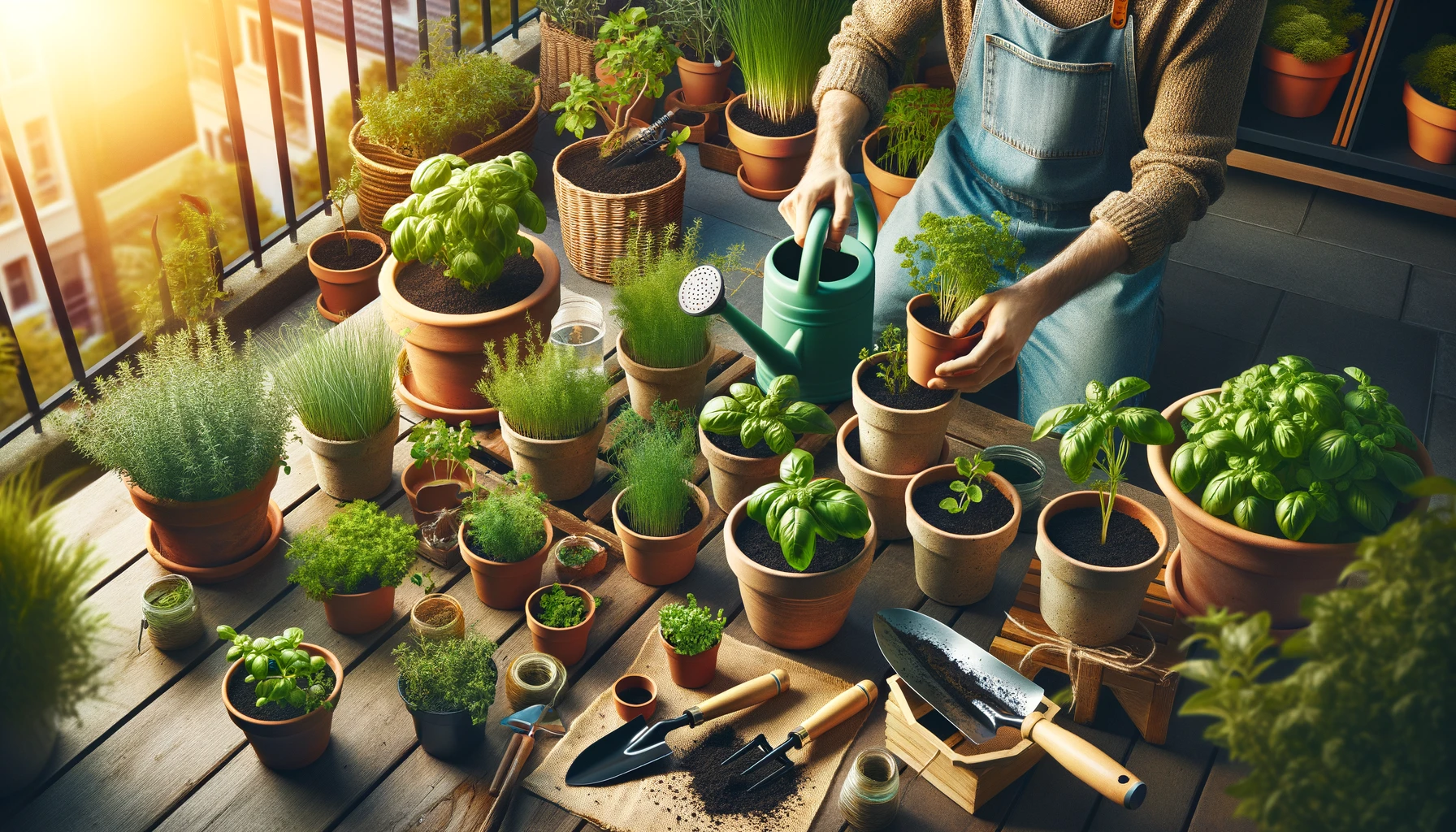Planting a herb garden is a delightful and practical project that appeals to both seasoned gardeners and beginners alike. With their ease of growth and versatility, herbs can thrive in small spaces, making them perfect for kitchen gardens, balconies, or even windowsills. Not only does cultivating your own herb garden provide a convenient source of fresh ingredients for cooking, but it also offers a rewarding and therapeutic gardening experience. Here’s a comprehensive guide on how to start your own herb garden and enjoy the abundance of flavors and aromas it brings to your home.
Materials You’ll Need
Before you embark on your herb gardening journey, gather the necessary materials:
- Herb plants or seeds: Choose from a variety of herbs such as basil, parsley, thyme, and mint, depending on your culinary preferences.
- Pots or containers with drainage holes: Opt for containers that allow excess water to drain freely, preventing waterlogging and root rot.
- Potting mix: Use a high-quality potting mix rich in nutrients and with good drainage properties to support healthy herb growth.
- Watering can: Ensure you have a watering can or a similar tool for watering your herbs regularly.
- Labels or markers: Keep track of your herb varieties by labeling your pots or containers.
- Optional: fertilizer: Consider using a balanced fertilizer to provide additional nutrients for optimal herb growth.
Selecting Your Herbs
When choosing herbs for your garden, consider both their culinary value and their growth requirements. Select herbs that you enjoy cooking with or that contribute pleasant aromas to your living space. Additionally, take into account the amount of sunlight each herb requires and their growth habits. Some herbs thrive in full sun, while others prefer partial shade, so plan your garden layout accordingly to ensure each herb receives adequate sunlight.
Choosing Containers
Selecting the right containers is essential for the success of your herb garden. Opt for pots or containers that have adequate drainage holes to prevent water from accumulating at the roots, which can lead to root rot. Additionally, ensure that the containers are spacious enough to accommodate the growth of your herbs, allowing room for their roots to spread and develop.
Preparing the Soil
Proper soil preparation is key to providing your herbs with the necessary nutrients and growing conditions for healthy development. Use a high-quality potting mix specifically formulated for container gardening, as it provides excellent drainage and aeration for your herbs’ roots. Before planting, ensure the soil is well-moistened but not waterlogged to create an ideal growing environment for your herbs.
Planting the Herbs
Whether you’re starting from seeds or transplanting seedlings, proper planting techniques are crucial for establishing healthy herb plants:
- Seeds: If starting from seeds, follow the planting instructions provided on the seed packet, which typically include guidelines on planting depth and spacing.
- Seedlings: For plant seedlings, gently make a hole in the soil using your fingers or a small trowel, then carefully place the seedling into the hole. Cover the roots with soil and gently firm the soil around the base of the plant to provide stability.
Watering and Sunlight
Consistent watering and adequate sunlight are essential for the health and vitality of your herb garden:
- Watering: Keep the soil consistently moist by watering your herbs regularly, but be cautious not to overwater, as this can lead to waterlogged soil and root rot. Check the moisture level of the soil regularly and adjust your watering frequency as needed.
- Sunlight: Place your herb pots in a location where they will receive adequate sunlight according to the requirements of each herb. Most herbs prefer full sun, so aim to provide at least 6-8 hours of direct sunlight per day for optimal growth.
Maintenance and Harvesting
To ensure the continued growth and productivity of your herb garden, practice regular maintenance and harvesting techniques:
- Trimming and pruning: Encourage healthy growth by trimming and pruning your herbs regularly to remove any dead or yellowing leaves and to promote bushier growth.
- Harvesting: Harvest your herbs as needed for cooking, but avoid removing more than one-third of the plant at a time to allow for continued growth and regrowth. Harvest herbs in the morning when their flavors and aromas are most intense for the best culinary results.
Enjoying Your Herb Garden
Finally, savor the fruits of your labor by incorporating your homegrown herbs into your culinary creations. Experiment with different flavor combinations and recipes to fully appreciate the fresh flavors and aromas that homegrown herbs provide. Additionally, take pleasure in the greenery and fragrance that your herb garden adds to your living space, creating a welcoming and inviting atmosphere for you and your guests to enjoy.
In conclusion, starting a herb garden is a simple yet rewarding endeavor that allows you to cultivate fresh ingredients for your meals while enjoying the therapeutic benefits of gardening. By following these guidelines and caring for your herb plants with diligence and attention, you’ll soon be reaping the bountiful rewards of your own homegrown herb garden. So roll up your sleeves, get your hands dirty, and embark on your herb gardening journey today!



